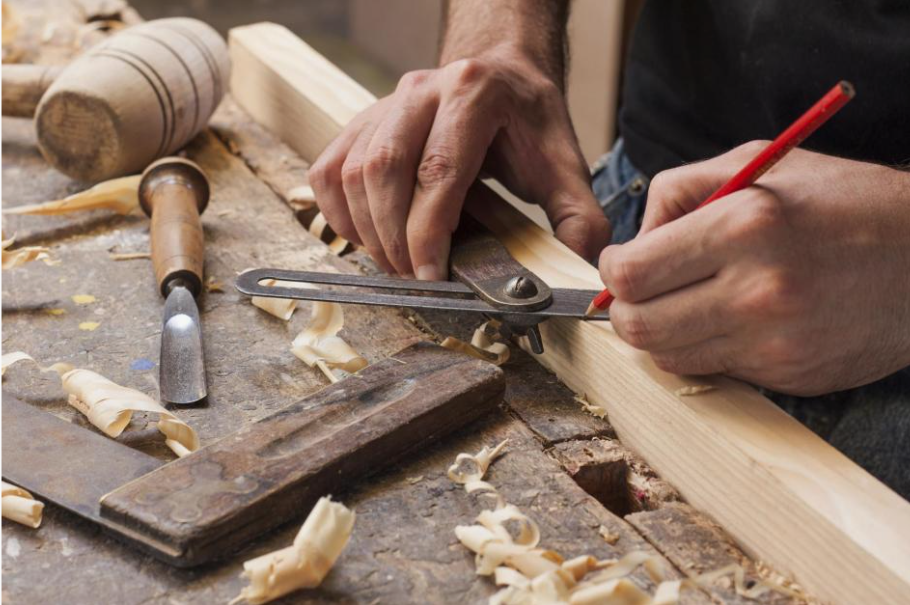Woodworking is both an art and a skill and the tools you use can make all the difference. Among the most versatile and essential tools for any woodworker are woodcutting tools with arched blades. These tools known for their unique curved design are perfect for precision shaping, carving and cutting. In this guide, we’ll delve into the history, types, benefits and proper use of these tools helping you understand their significance and how to get the best results from them.
The Historical Significance of Woodcutting Tools with Arched Blades
The origins of arched blade tools date back centuries. Historically, craftsmen relied on these tools for everything from building boats to crafting intricate furniture. The arched blade design allowed for better control and efficiency making it a favorite among woodworkers of all skill levels.
One notable example is the drawknife which was used extensively in shaping wooden beams for homes and boats. The scorp another arched blade tool was indispensable for hollowing out wooden bowls and chairs. These tools have evolved over time, yet their fundamental design remains unchanged because of their practicality and efficiency.
Types of Woodcutting Tools with Arched Blades
Woodcutting tools with arched blades come in various forms, each designed for specific purposes. Below, we explore the most popular types and their unique features:
Drawknives
- Description: A long blade with handles on both ends, typically used to shave wood by pulling it toward you.
- Best For: Removing bark, shaping chair legs, and rough shaping tasks.
- Fun Fact: Early settlers used drawknives to prepare logs for cabin building.
Scorp (Hollowing Tool)
- Description: A small tool with a curved blade perfect for hollowing out concave shapes.
- Best For: Creating bowls, chair seats or other scooped designs.
- Case Study: Traditional Windsor chairs owe their comfort and design to artisans using scorp tools.
Adzes
- Description: An axe like tool with a perpendicular curved blade designed for cutting or carving large sections of wood.
- Best For: Removing large amounts of wood quickly often used in timber framing or sculpture.
- Interesting Note: Viking shipbuilders relied on adzes for their legendary longships.
Curved Chisels (Gouges)
- Description: Chisels with a slightly curved or U-shaped blade ideal for detailed carving work.
- Best For: Creating intricate patterns, lettering or decorative designs.
- Tip: Combine with a mallet for greater precision in hardwood projects.
Curved Hand Saws
- Description: Saws with a slight arch in the blade, making them suitable for cutting curves or intricate shapes.
- Best For: Precision work in cabinetry, joinery or artistic designs.
- Pro Tip: Use a curved saw when creating tight circular patterns in wood.
Benefits of Using Woodcutting Tools with Arched Blades
Why are these tools a staple in woodworking? Their design offers several distinct advantages:
- Improved Control: The curved blade allows for smoother more precise cuts.
- Versatility: From shaping furniture to artistic carvings these tools adapt to various tasks.
- Durability: High quality arched blades often outlast straight-edged tools with proper care.
- Ergonomics: The natural curvature reduces strain on the user allowing for extended periods of work without discomfort.
How to Choose the Right Tool
Selecting the right tool depends on your project, skill level and budget. Here’s a handy table to guide your decision making:
| Tool Type | Best For | Skill Level | Price Range | Material Compatibility |
|---|---|---|---|---|
| Drawknife | Shaping wood surfaces | Beginner–Intermediate | $30–$150 | Softwoods, hardwoods |
| Scorp | Hollowing designs | Advanced | $50–$200 | Softwoods |
| Adze | Large-scale carving | Intermediate–Advanced | $60–$300 | Hardwoods, timber |
| Curved Chisel | Decorative carving | Beginner–Advanced | $20–$150 | Softwoods, hardwoods |
| Curved Saw | Intricate patterns | Intermediate | $40–$120 | Plywood, hardwoods, veneers |
Maintenance and Safety Tips for Arched Blade Tools
Proper care and safe usage are critical for maximizing the lifespan and effectiveness of your tools. Here’s how you can ensure safety and longevity:
Maintenance
- Sharpen Regularly: A dull blade can damage wood and make the tool harder to use. Use a whetstone or honing guide to maintain sharpness.
- Prevent Rust: Store tools in a dry climate controlled area and apply a thin layer of oil to the blade after each use.
- Handle Care: Wooden handles can crack over time. Sand and oil them periodically to maintain a firm grip.
Safety Tips
- Protective Gear: Always wear gloves and safety goggles.
- Proper Handling: Use a stable workbench and secure the wood to prevent slipping.
- Blade Awareness: Keep the cutting edge facing away from your body and other people.
Popular Brands and Where to Buy
High-quality tools can make a world of difference. Here are some trusted brands and where you can find them:
- Flexcut: Known for precision carving tools, perfect for fine details.
- Gränsfors Bruk: A favorite for adzes and drawknives, renowned for durability.
- Morakniv: Offers affordable options for beginners and hobbyists.
- Where to Buy:
Creative Uses Beyond Traditional Woodcutting
Arched blade tools aren’t limited to woodworking. Their versatility extends into various creative applications:
- Furniture Design: Use a drawknife for rustic furniture or an adze for custom chair seats.
- Artistic Carving: Create intricate sculptures or wooden wall art.
- DIY Home Projects: Add unique touches to cabinetry, shelving, or garden décor.
Troubleshooting Common Issues
Even seasoned woodworkers encounter challenges. Here’s how to address common problems:
- Blade Dullness: Regularly hone your blade and ensure you’re cutting with the grain for smoother results.
- Grip Fatigue: Use padded gloves and take regular breaks.
- Uneven Cuts: Secure the wood properly and practice steady, even strokes.
Conclusion
Woodcutting tools with arched blades are indispensable for anyone serious about woodworking. Their precision, versatility and timeless design make them a favorite for projects ranging from functional furniture to artistic creations. By understanding the types, uses and maintenance of these tools, you can unlock a world of possibilities in woodworking.
FAQs
What are woodcutting tools with arched blades best for?
They excel at shaping, carving and creating intricate designs in wood.
Can I use these tools as a beginner?
Yes, tools like drawknives and curved chisels are beginner friendly with proper guidance.
How often should I sharpen my tools?
For frequent use, sharpen every 2–3 projects or when you notice performance issues.
Read More: Insurgent Takeovers NYT







